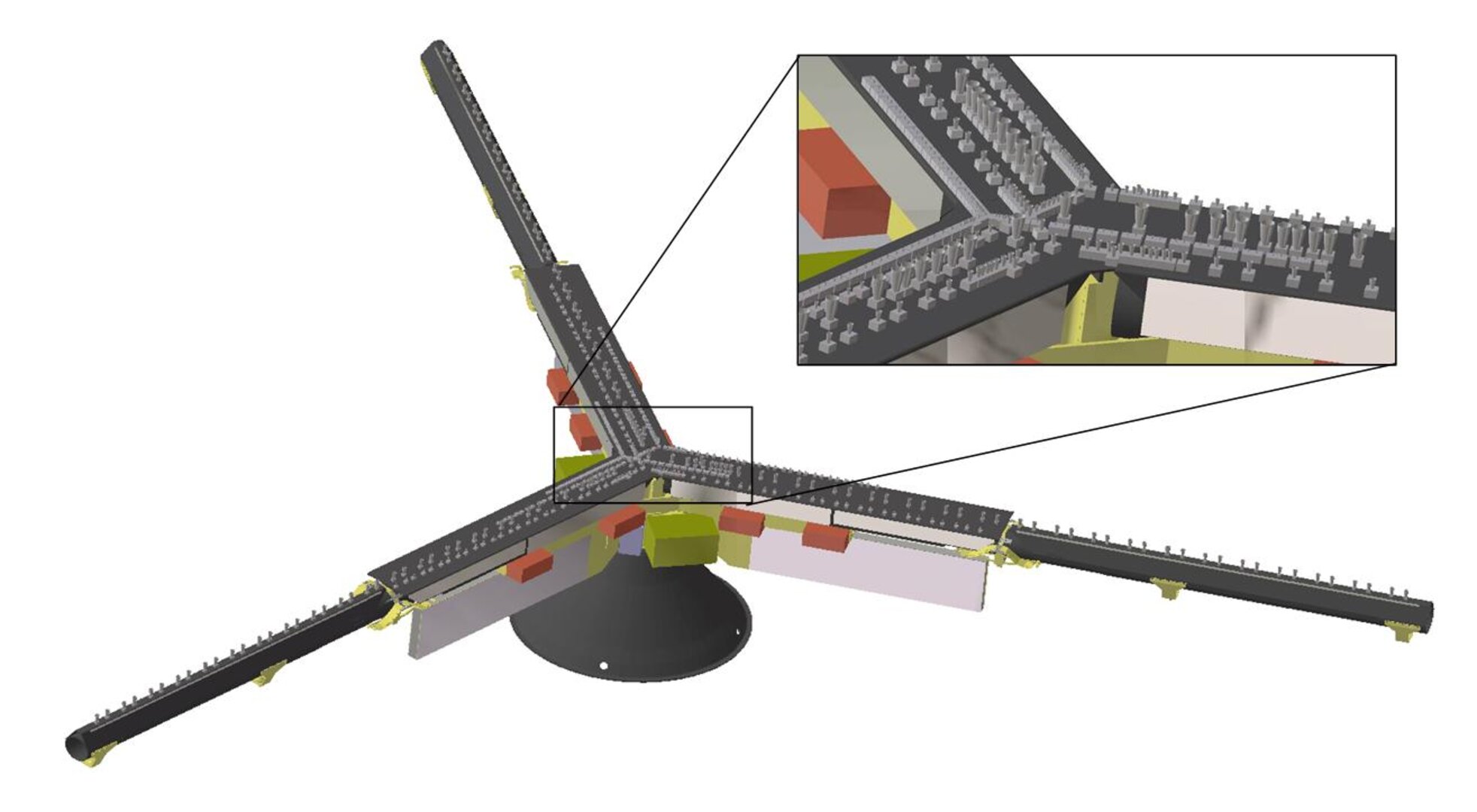

Agency
Each arm contains numerous antenna elements
Each arm of the GAS instrument contains numerous antennas. The signals received by these antennas are precisely correleated together through interferometry to build up a detailed picture, equivalent to 30km resolution at geostationary orbit. To further increase the detail deliverable by this 'sparse antenna', the Y-shaped antenna rotates. It only takes a half-rotation to compile a complete picture. The concept is similar to that used by ESA's SMOS, now in orbit, although SMOS does not rotate and uses longer-wavelength L-band instead.





